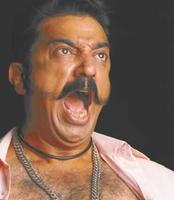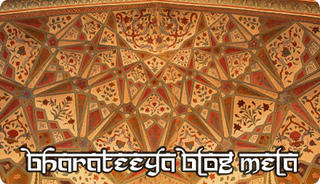These are little travel nuggets from various trips in Southern Tamil Nadu, each of which is too small to form a complete post in itself, but which (hopefully) forms some good reading together.
**********
This was during one of my numerous visits to the heartland of Southern most India, Tirunelvelli. It’s a wonderful, medium sized, somewhat sleepy town woven in to Tamil folklore, with many songs and stories written about the sweet water of the Tambaraparani river, and the majestic Nellaiappar Temple. Tirunelveli sometimes also makes it to the news for the wrong reasons (when a very rare, violent riot breaks out). Anyway, this is Thevar country, and in older times the prevailing stereotype believed that the hearty folks down here were brave, honorable, proud and easily provoked. If you’ve seen the Kamal Hasan flick
Thevar magan, which tells of a feudal tale like a thousand true stories from this region, you’ll know what I’m talking about.

Anyway, here I was, at my cousins’ place, sitting on the porch and chatting with the toothless, shirtless, aged family retainer/watchman/all purpose handy man, Karuppa. He (then) must have been around sixty-five at least (he didn’t know his own age), and was almost as blind as the proverbial bat (stubbornly refusing to get rid of his cataracts), and needed to squint to see some one at a fifteen-foot distance. I asked him about the (in)famous sickle-swords of the region, the
aruvaal. Warriors would carry one of these (often three feet long), hidden behind their backs. I asked him if he had ever held one of them.
”Aruvaal la yennale? Athu yellaru kitta irukum” (“what’s the big deal in an aruvaal, every one has one of those”), was his nonchalant reply.
I stared at him incredulously. He took me up to his little corner, and emerged, victoriously swinging an old, rusty, three-foot aruvaal. Yup, that polite, laughing, half-blind old man sporting a big, toothless grin, had a sword.
It was one of the few times when I was both shocked,
and thought something was unbelievably cool as well!
************
By far the BIGGEST thing in town (yes, “town” is where the folks here say they are going to, if they mean they’re going down to the city center) is the
Nellaiappan Temple, with Shiva in the “Nataraja” form. As you go to “town”, you see laid-back
vesthi or lungi clad (and folded to just above the knee, revealing dashing red or blue “boxer shorts” of sorts) men sitting outside tea stalls, catching up on the latest “happenings” in town. There would be lots of pretty Tamil girls, mostly still clad in
paavadai-thavani, or the more fashionable
Salwaar kameez (jeans or skirts were a rarity), with flowers in their hair, usually walking around in small groups, chatting. And then, you see the massive stone temple
gopuram rising over the landscape.
The temple, built by Pallava kings, is around 1300 years old, though it has been renovated and expanded many times over the centuries. An important
Shivasthalam, it is one of the largest Shiva temples in India. Legend has it that some farmer harvested his paddy (
nel), left it out to dry, and asked Shiva to protect it. Some time later, there was a huge thunderstorm, and the farmer feared that he had lost his entire crop. In anguish, he ran back once the rain stopped, to find that his grain was dry and untouched.
”Nellaiappar” Shiva had saved the day.
This temple, like most temples of the deepest south, commands awe with its sheer size. A major highlight of the temple is the 1000 pillar "cosmic-dance hall", which seems to stretch for miles. Deep, dark corners (when explored) reveal the distinct odor left by bats. And you stare in amazement at the scale of it all. Another major highlights of this temple undoubtedly are the musical pillars. Made of stone, select sets of pillars (closer to the sanctum) emit distinct notes (sa-re-ga-ma-pa-dha-ni, or solfa notes) when thumped with the palm. Hidden along the long corridor leading from the Shiva shrine to the Kantimati (Parvathi, Shiva’s consort) shrine is a rusty sign, with the paint peeling off. It’s by the ASI (Archeological society of India), and forlornly (almost apologetically) notes that the greater temple complex is the largest ever built in any Hindu temple, after the complex at
Ankor Vat.
****************
When I mentioned earlier why Tirunelvelli is part of Tamil folklore, I forgot the single most important (and greatest) contribution of Tirunevelli to the world. Tirunelvelli is also the land of that sublime creation, “Tirunelvelli” halwa, There are over a dozen shops that sell “original” Tirunelvelli halwa, but any old timer will tell you that there’s only one original.
Heading out from the temple, and walking a few blocks, one arrives at a dark, gloomy looking shop, known fondly as
”Irutukadai” (the dark shop!). At about 5:30 in the evening, the shop is closed, but a small crowd begins to line up outside it. By 5:55 it is restless. At the stroke of six, the doors open, and the crowds move in for the kill. The
only thing sold in this shop is the hot, sweet, brown, wheat halwa, dripping in ghee. Customers go crazy, buying kilogram quantities of the stuff to take home, while others (such as myself) order more modest quarter-kilo servings (served in plantain-leaves) for immediate consumption and instant
moksha.
Apparently, this most Tamil of creations is not Tamil. Rajput immigrants, who came here some eight decades ago, and who still own the store, set up the shop. Their “formulation” is a well-kept family secret (And it’s true. The
irutukadai, halwa is somehow superior to other pale imitations elsewhere). It must be the sweet waters of the Tambaraparani that makes the difference.
(The second part of these posts is
here)












